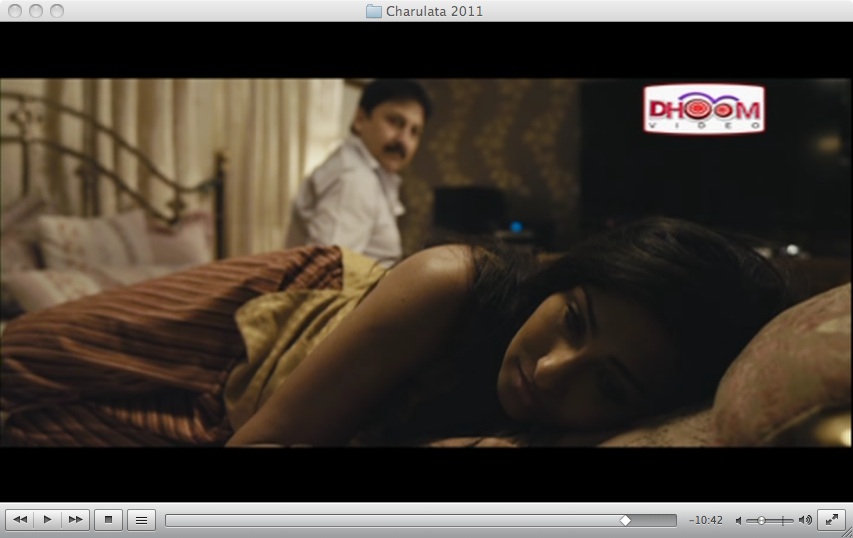Subhajit Chatterjee/Ashish Rajadhyaksha, Tradition Under Siege: Obscene and Degraded Images in/of Kolkata's New Cinemas
PROVOCATIONS
And a proper double-bill for Sandip Ray’s Feluda would be too much mediocrity to handle in one go. ;-) fuck Manik. Fuck felu. Fuck babu –
Q’s tweet, January 3, 2017
‘The essential idea behind the exact words I used was that I feel stifled as a Bengali by certain benchmarks which cannot be crossed or icons which cannot be questioned. Like Gandu, f**k is a word that has a negative connotation. But it also very flexible. It can be used as a verb, a noun and an adjective. It is fluid’ –
(Q defending himself)
Rabindranath Tagore died in 1941, and for fifty years thereafter, all copyright on his prodigious literary and visual output was owned, and ruthlessly controlled, by the Vishwabharati University. In 1991, the Government of India specially amended the law to extend to sixty years with the sole purpose of extending the University's control over his work.
In 2001, when Tagore's work finally entered the public domain, dozens of independent publishers reprinted his writings, sales of which went up by over 400 per cent in a single year. The more important consequence was, however, the extraordinary proliferation of an ‘unauthorized’ use of Tagore's music, poetry and stories: an outpouring of creativity that effectively confirmed the University’s worst fears even as it saw the astonishing infusion of new energy in Kolkata's music, television and film industries.
Tagore continues to be central to the resurgence of a new popular, even trash, culture in the early twenty first century, with lewd rehashes of famous Bengali films alongside edgy re-renditions of both his writings and songs (e.g. Q's own 'trippy' musical adaptation of Tagore's Tasher Desh/The House of Cards, 2012).
The Tagore interregnum, and his extraordinary impact on all of modern Bengali culture, thus also throws light on another aspect of modernism: its conservative avatar, as a regulatory practice, especially when backed by state authority. Bengal saw a remarkable efflorescence of popular art at the beginning of the twentieth century. From roughly the 1940s, indeed coinciding perhaps with Tagore’s death, the domination of a high-modern aesthetic made popular culture in the city both illegitimate and illegal. And then, more than a century after Kalighat, Bengal entered the twenty first century.
II
Perhaps the indefinite term alternative-popular is well suited to capture the impasse of this moment, in which products of generic transformations within the film industry seek to challenge the industrial film culture by infusing popular film narratives with vibrant, stylistic eccentricities and pushing spectatorial experiences into morally uncomfortable zones – Subhajit Chatterjee, Toward a New Junk Aesthetics?
(Below-top) Charulata 2011 (Agnidev Chatterjee, Bengali, 2012), a soft-porn remake of Satyajit Ray's famous Charulata (1964) based on Rabindranath Tagore's novella Nastaneer (Bottom): Q's Gandu/The Asshole (Bengali, 2010)
 |
|---|
 |  |
|---|
Readings:
Chatterjee, Subhajit, ‘Toward a New Junk Aesthetics?: Narratorial Predicaments in Contemporary Alternatives in/to Bollywood’, positions: east asia cultures critique, Volume 25, Number 1, February 2017, pp. 195-221 (download here)
Hoek, Lotte (2010): 'Cut‐Pieces as Stag Film: Bangladeshi Pornography in Action Cinema, Third Text, 24:1, 135-148 (download here)
Hoek, Lotte, 'Unstable Celluloid : Film Projection and the Cinema Audience in Bangladesh', BioScope: South Asian Screen Studies 2010 1:49 (download here)
Singh, Bhrigupati, ‘Aadamkhor Haseena (The Man-Eating Beauty) and the Anthropology of a Moment’, Contributions to Indian Sociology, Volume: 42 issue: 2, page(s): 249-279 (download here)
Document Actions
